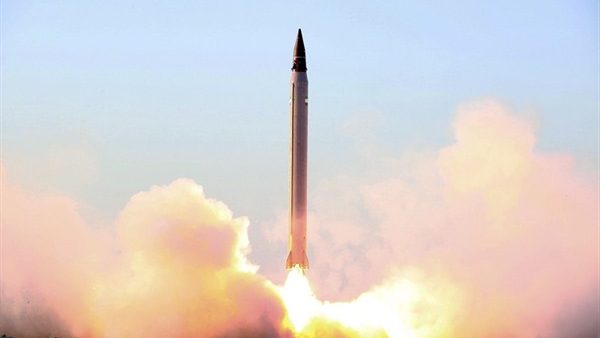Iran’s missile program does not make headlines as often as its nuclear efforts. But the missile program is tied to the nuclear program in two different ways: technically, because Iran has been keen to develop rockets that could carry a nuclear warhead; and legally, because United Nations sanctions against Iran target the missile program almost as much as the nuclear one. What would happen to Iran’s missiles in the event that a deal can be struck with Tehran regarding its nuclear program remains a largely unexplored issue.
Iran has
one of the largest and most diverse active missile programs in the world, developed in cooperation with North Korea and experts from Russia, among other countries. In the past decade, Tehran has experimented with many different technologies, allowing the country to make great strides on the path toward a modern missile capacity. In the early 2000s, it tested the Shahab-III missile with a triconic or baby-bottle top, the ideal shape to carry a nuclear weapon. In the late-2000s, Iran gained mastery of solid propulsion, which makes missiles more reliable and less vulnerable, and of stage separation, a quantum leap that allows for longer-range missiles. If it overcomes technical difficulties, Tehran could develop an intercontinental ballistic missile based on space launch technology perhaps as early as 2015, according to U.S. intelligence, although most observers put the date later.
Iran’s ballistic missiles serve several purposes. First comes deterrence and war-fighting. Informed by its experience of the Iran-Iraq War of the mid-1980s, during which the Iranian population paid a high price, and due to its limited conventional means, Iran sought to develop an asymmetric capability to threaten enemy cities and military bases, notably in the Persian Gulf. Second, ballistic missiles are an indispensible component of an efficient nuclear weapons program, hence their inclusion in U.N. sanctions. Third, missile technology can give Iran access to space and the prestige of modernity. The Iranian investment in long-range rockets
was recently confirmed by a report according to which Tehran is building a third facility for long-range rocket launchers. Finally there is influence: Iranian short-range missiles and nonballistic rockets are an asset in its assistance to Hezbollah and a means of threatening Israel.
Iran’s inventory comprises the older liquid-fueled Shahab series, based on Soviet Scud technology, with the regional-range Shahab-III being the current flagship of Tehran’s arsenal. The coming generation of solid-fueled missiles includes the short-range Fateh-110 and the medium-range Sejjil, which could reach Israel and Europe. Iran also has Safir and Simorgh space launch vehicles that could be the basis of an intercontinental missile. In all, Iran’s arsenal comprises several hundred missiles.
An accord that solved the nuclear issue while leaving Iran’s ballistic missile program intact would alleviate many of the international community’s concerns but would not put an end to the Iranian military threat.
First, it would leave Iran with the ability to continue to directly threaten Israel’s territory and population with short-range missiles and rockets launched from South Lebanon and the Gaza Strip.
Second, both Israel and the Arab Persian Gulf states would also remain vulnerable to Iran’s cruise missiles. (Cruise missiles are of lesser nuclear proliferation concern, because they need a very small nuclear warhead, which Iran might not be able to develop on its own.)
Third, such an accord would very likely leave Iran as a virtual nuclear country with medium- and long-range strike capability. Very few countries have both space launchers and a fissile materials production capability but no nuclear weapons. Only two come to mind: Brazil and Japan. It is not a coincidence that both are considered potential nuclear-capable nations. Space rockets and civilian enrichment plants, both of which can be reconfigured for military usage, comprise two of the three components needed for a nuclear weapons program. The third, building a nuclear weapon, would then require an appropriate blueprint, know-how and experimental apparatus. Whether the international community would be content with a Japan-like Iran would depend on its level of confidence in the peaceful nature of Tehran’s program.
Even without a nuclear weapons capability, the prospect of an Iran armed only with ballistic missiles is far from reassuring.
A recent study demonstrated that “a state armed with ballistic missiles is significantly more likely to initiate an interstate crisis against another state, and that states armed with ballistic missiles are significantly less likely to be the target in an international crisis.” It is also not certain that the U.S. Congress would be satisfied with a deal that could leave Iran with the capability to threaten the American homeland, even with nonnuclear means.
There is no easy solution to the Iranian missile problem, and it is doubtful that the international community would press for a strict ban on Iranian missiles if it appeared that an accord on the nuclear program itself was feasible, though it would probably insist that Tehran adhere to the Missile Technology Control Regime. Meanwhile, the ballistic missile problem is a reminder that, for all the current excitement about the possibility of an agreement on the nuclear front, Western countries and their allies would still have many reasons to worry about the Iranian regime.
Dr. Bruno Tertrais is a senior research fellow at the Paris-based Fondation pour la Recherche Strategique (Foundation for Strategic Research). He was a member of the 2007 and 2012 presidential commissions on the White Paper on Defense and National Security, as well as the 2008 ministerial commission on the White Paper on Foreign and European Policy.

